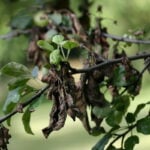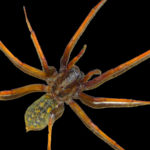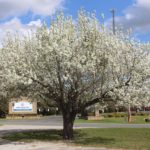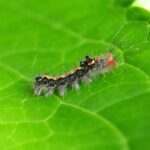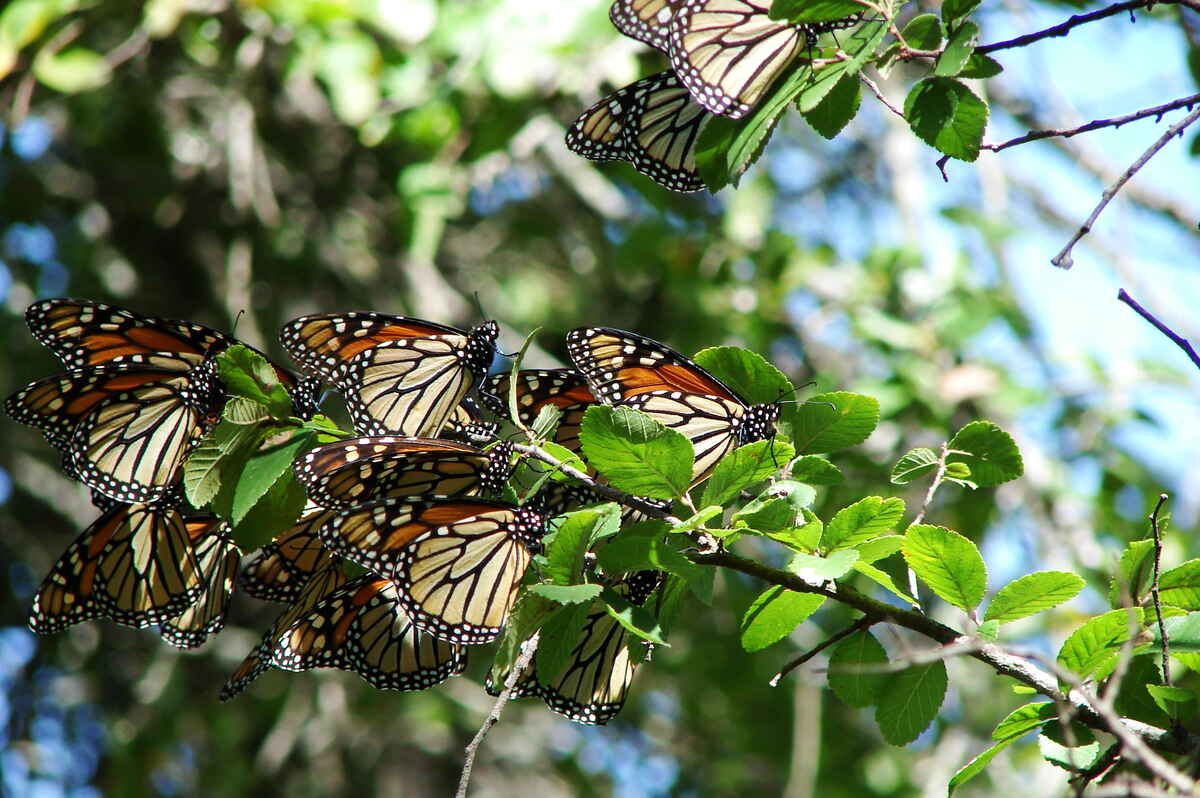
The hardiest trees for Dallas are those trees that are able to survive even in the region’s most adverse growing conditions. Live oaks, cedar elms, white oaks, red oaks, crape myrtles, magnolias, Texas buckeyes, redbuds, bald cypresses, etc., all thrive in the Dallas, Texas climate. However, homeowners in Dallas should consider their environment and local weather patterns when deciding which trees to put in their yards.
1. Live Oak (Quercus virginiana)
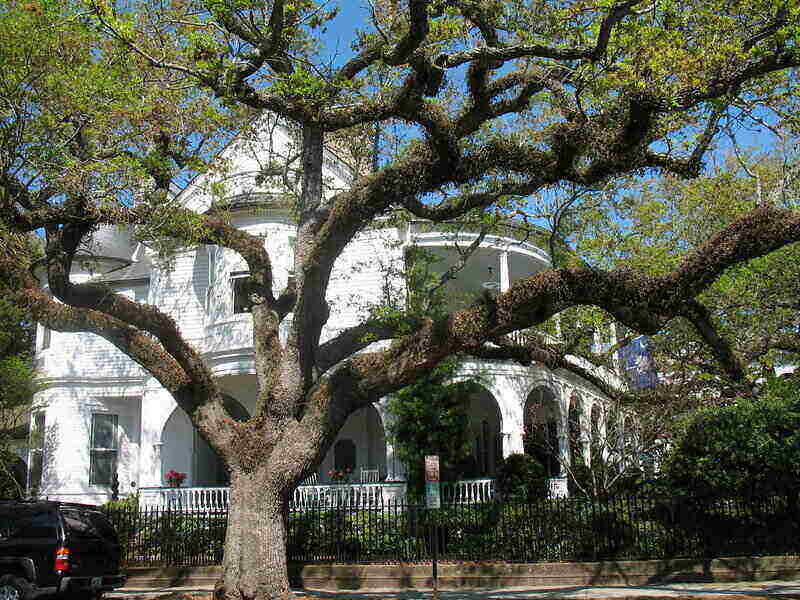
Live oak is a traditional option for homeowners in Dallas. The resilience of this tree’s wood and its capacity to survive intense heat and frequent tornadoes makes it an indispensable asset each summer. Live oak trees are characterized by their thick, alternating leaves that are a vibrant green color and their distinctively elongated acorns.
Live oaks are an excellent choice if you require a long-lasting tree. They are resistant to extreme temperatures, require little care, and flourish in Dallas’s climate. Because live oaks can survive for hundreds of years, you should give them plenty of space to spread their wide branches and deep roots.
- Hardiness zones: 7-10
- Sun exposure: Full sun, partial shade
- Soil needs: Acidic, alkaline, loamy, moist, sandy, well-drained soil, or clay soils
- Foliage: Evergreen
- Mature size: 40-80 feet tall; 60-100 feet wide
2. Cedar Elm (Ulmus crassifolia)

Besides American elms, cedar elms are the most prevalent elm trees in Texas, and they may be found in all parts of the state’s eastern, southern, and central regions. The cedar elm is preferable to other trees due to its adaptability to different soil conditions. Cedar elms are drought-resistant and provide welcome shade in the scorching Texas sun.
In Texas, the cedar elm thrives as a native, resistant, and beautiful tree both in the wild and in landscapes. Its dark green leaves have a rough surface and turn a brilliant yellow in the fall before falling to the ground.
- Hardiness zones: 6-9
- Sun exposure: Full sun
- Soil needs: Alkaline, loamy, moist, sandy, well-drained, or wet clay soils; can survive in saturated grounds
- Foliage: Deciduous
- Mature size: 50-70 feet tall; 40-60 feet wide
3. Red Oak (Quercus rubra)
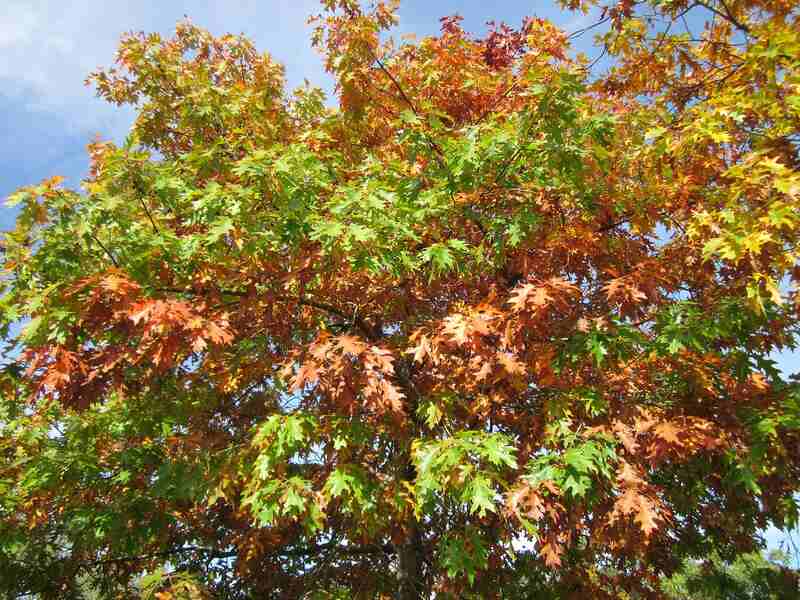
The red oak is a prevalent tree in Dallas because of its beauty and the shade it provides. On a steamy summer day, there’s nothing better than relaxing in the cool shade of a red oak tree while sipping a glass of iced tea. Red oaks are also common in Dallas because the city’s slightly acidic soil is suitable for these trees.
Red oaks require relatively little water, making them drought-tolerant, and they can withstand high temperatures, which is very useful in North Texas with its scorching summers. Because of their deciduous nature, red oaks shed their reddish-brown leaves for the winter. Acorns are produced by red oak trees and are commonly consumed by wildlife after they fall to the ground.
- Hardiness zones: 3-8
- Sun exposure: Full sun
- Soil needs: Acidic, clay, loamy, moist, sandy, or well-drained soils
- Foliage: Deciduous
- Mature size: 60-80 feet tall, 50-70 feet wide
4. Bur Oak (Quercus macrocarpa)
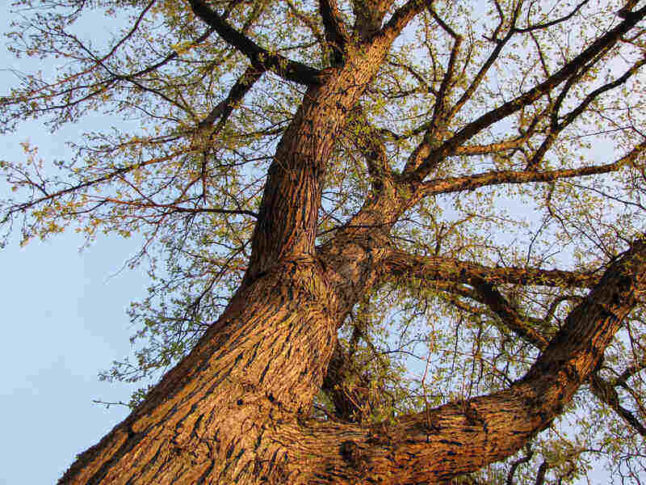
Photo Credit: Katja Schulz / Wikimedia Commons / CC BY 2.0
Bur oaks are tall Texas-native trees with big leaves and enormous acorns. They can survive both freezing temperatures and scorching heat while still requiring little in the way of tree care, making it a fantastic fit for the Texas climate.
Once planted, bur oaks can survive for more than 150 years. Large, dark, curved leaves, corky, rough bark, and acorns the size of ping-pong balls are just a few of the distinctive features of this tree.
In addition to being able to survive in dry conditions, these native trees can also tolerate acidic soils, alkaline soils, loam, clay, and places with poor drainage. As a type of white oak, they are naturally resistant to flames. Their roots rarely cause issues with sidewalks, curbs, or foundations.
- Hardiness zones: 3-8
- Sun exposure: Full sun
- Soil needs: Acidic, alkaline, loamy, sandy, well-drained, wet, or clay soils
- Foliage: Deciduous
- Mature size: 70-80 feet tall; 70-80 feet wide at maturity
5. Chinese Pistache (Pistacia chinensis)
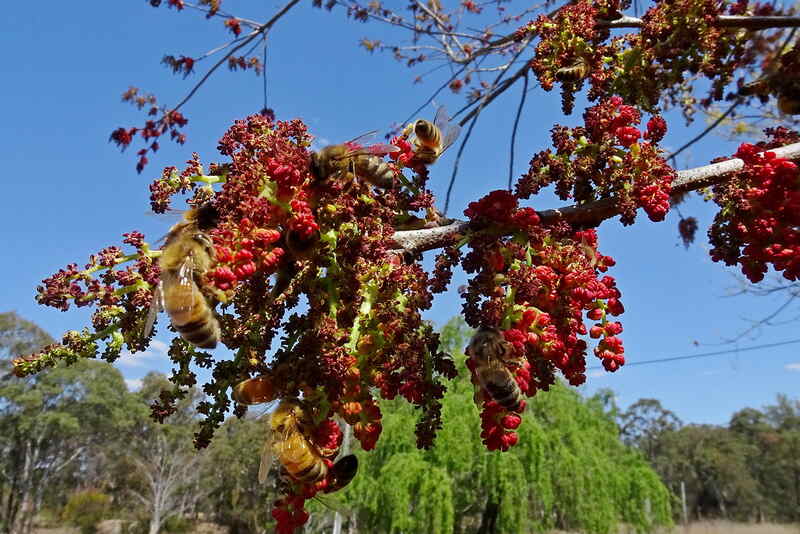
One of the best shade trees in Dallas is the Chinese pistache. The Chinese pistache tree is an ornamental medium-sized shade tree, grown primarily for its decorative value. It provides moderate shade, requires little tree care, and is usually pest-free.
New trees grow at an average of 2 to 3 feet each year, making the Chinese pistache one of the best trees for Dallas because of its fast growth rate for a long-lived species. The Chinese pistache’s umbrella-like canopy also helps to make it popular for landscapes.
As the weather cools, the tree’s in-season green leaves transform into vibrant shades of orange, scarlet, and crimson, making it a favorite of Dallas residents for fall color. As a bonus, the Chinese pistache can withstand extremely high temperatures, making it an excellent choice for Texas summers.
- Hardiness zones: 6-7
- Sun exposure: Full sun, partial shade
- Soil needs: Alkaline, loamy, moist, sandy, silty loam, well-drained, or clay soils
- Foliage: Deciduous
- Mature size: 25-35 feet tall; 25-35 feet wide
How to Care for Trees in Dallas
As the climate of Dallas is really harsh, the trees found there require some extra care. Some important points to be considered are as follows:
Add Mulch
Mulch makes your landscape look better and has several practical benefits for your trees and plants. In Dallas, mulch should be consistently applied around the trunks of your ornamental trees, especially in summer. The ideal thickness for a mulch layer is two to three inches. Roots may become infected with fungi or other diseases if it gets too thick.
Mulch protects your soil from drying out during hot summers in Dallas by reducing the water lost through evaporation. As a result, you’ll need to water your plants less frequently, and they’ll still get the water they need. Mulch also suppresses weeds.
Watering Trees and Shrubs
Watering newly planted trees and bushes frequently is essential. Deep, repeated watering is required to aid the root ball in settling into the soil. Establishing a plant’s root system might take several months to a couple of years, depending on the type of shrubs or trees you plant.
Pest and Disease Control
As Dallas is home to many different types of trees, it also contains different types of garden pests and tree diseases. Commonly found diseases should be treated firsthand, as they can spread quickly to other trees. Your best bet for treating tree diseases is usually to hire a tree care specialist.
Fertilizing
Trees and shrubs get the nutrients they need to bloom profusely and develop more robustly when fertilized. Find out which nutrients your specific species of tree needs to thrive, then test your soil to find out if it’s lacking those essential nutrients. Choose the right fertilizer to supplement any nutrient deficiencies.
FAQ
Cedars, American elms, oaks (bur, red, Shumard, Mexican white, chinquapin, and live oaks), sycamores, chittamwoods, and pecans are only some of the native large tree species found in North Texas.
North Texas has many scenic natural areas, but the region isn’t known for its vibrant autumn foliage. On average, the trees remain green throughout the year but swiftly lose their leaves as the cold weather sets in.
Texas is home to several drought-tolerant evergreens, which help moderate the state’s intense summer heat. The most common type of evergreen tree in Dallas is the Eastern red cedar.
Final Thoughts on Hardy Trees for Dallas
Your landscape will benefit from trees, as they enhance the environment and the visual beauty of your home. But you want to choose a hardy type of tree that can survive and thrive in Dallas’s climate. Get in touch with a professional tree care service in Dallas for help choosing and planting the best tree for your yard.
Main image credit: Loadmaster (David R. Tribble) / Wikimedia Commons / CC BY 2.0.

